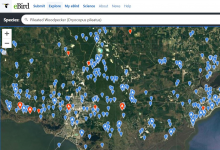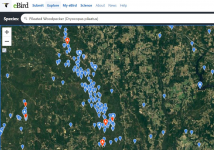The cognitive dissonance
in that paper is mind-bending (Collins 2019), my emphasis in
bold
The Ivory-billed Woodpecker would be a good candidate for the most elusive bird in the world on the basis of the following set of facts (which is unique to this species): (1) it has a long history of rediscoveries; (2) nobody has ever managed to obtain a clear photo without knowing the location of an active nest; (3) many sightings have been reported but nobody has managed to obtain a clear photo during the past several decades; (4) ornithologists were unable to obtain a clear photo during intensive multi-year searches at sites where they were convinced these birds were present; and (5) it is a species of great interest that resides in a region that is easily accessible to a large number of bird watchers. Clear photos were obtained at the nest in the Singer Tract, but photos obtained away from the nest during that study are of poor quality.
1) this makes no sense for a large woodpecker. Full stop.
2) untrue - see images from Cuba and moreover this was from an age when camera gear was not up to task (pre-1950)
3) also see sasquatch, sightings are irrelevant unless they match a pattern of confirmed records
4) massive search effort = no proof
5) yes, it is easily accessible, this is the southern USA and acknowledgement that even with low tech gear from 70 years ago people got a photo of the birds.








